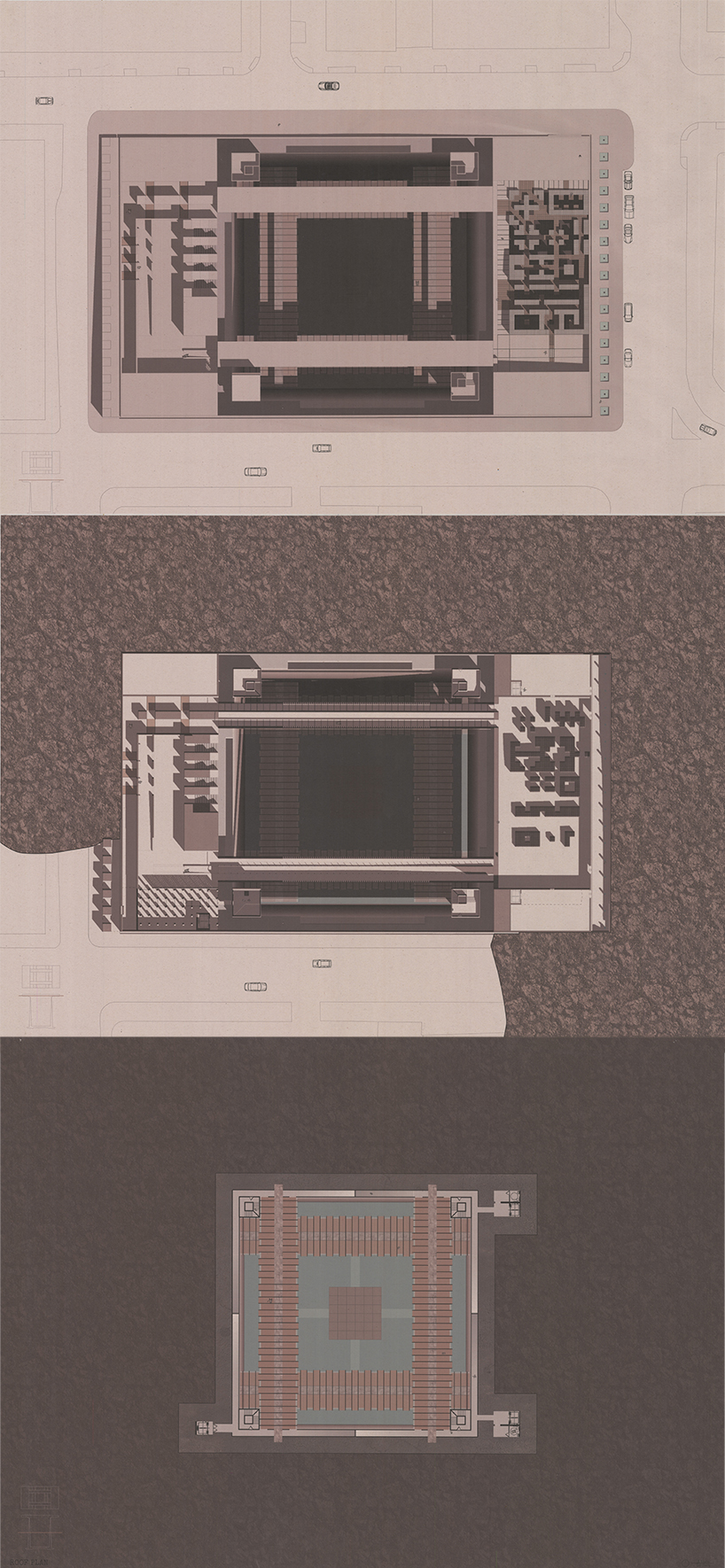
Urban Underworld by Courtney Horst from usa
designer's own words:
Cemeteries are often neglected or relocated from the cities which their inhabitants built. By removing the cemetery, one removes the memory and history of that city. The role of the cemetery in the life of the city must be reinforced. Certain aspects of the suburban cemetery are what give comfort to those who visit and are necessary for their emotional preparation. Rather than imitating those aspects and transplanting them into the city where they do not below, this cemetery aims to reinterpret the suburban cemetery and apply it to urban life.
The first suburban aspect to evaluate is long views reaching across the cemetery and into distant scenery, in which people seek a platform for worldly pondering. The second is personal space, found at the scale of the individual grave, in which a person finds solace for self-reflection. With these two aspects provided, a successful cemetery can exist in an unexpected location.
Long views are reconciled by the expanse of the cemetery—a 200 feet by 200 feet by 240 feet deep void which juxtaposes the mass of an adjacent skyscraper. The long views are populated by the repetition of walkways and niches. These niches provide the individual spaces for self-reflection. Rather than the rigid and flat field of name plates typical of columbaria, each niche exists as a relief in the columbarium wall to create a shelf for population of mementos. In this way, the cemetery acts as a library of memories, becoming more lush and vibrant as it is populated.
With the beauty of the cemetery revealed over time, it will become a significant pilgrimage rather than a forgotten haunt. Although its depth may be a deterrent at first, one must understand the importance of removing of oneself from the distractions of the city in order to be respectful of the deceased. Because the dead are the permanent residents of the underworld cemetery, they inhabit a more permanent structure—the columbaria act as huge concrete beams which brace the retaining walls of the chasm. The visitors to the underworld—the living—are only an afterthought; they have been provided wooden scaffolding that clutches perilously to the massive beams.
The living do not seek comfort in visiting the dead, but rather a perspective which alters their notions of death and therefore the significance of life. Looking down into the cemetery, a bottom cannot be determined—the darkness clouds our vision and discourages further investigation. Having reached the bottom, the view up allows us to reflect on where we have been, the triumphs we have accomplished, and the beauty which exists within the world of the living.
Cemetery plans at ground level, 3 meters below ground level, and a typical underground level.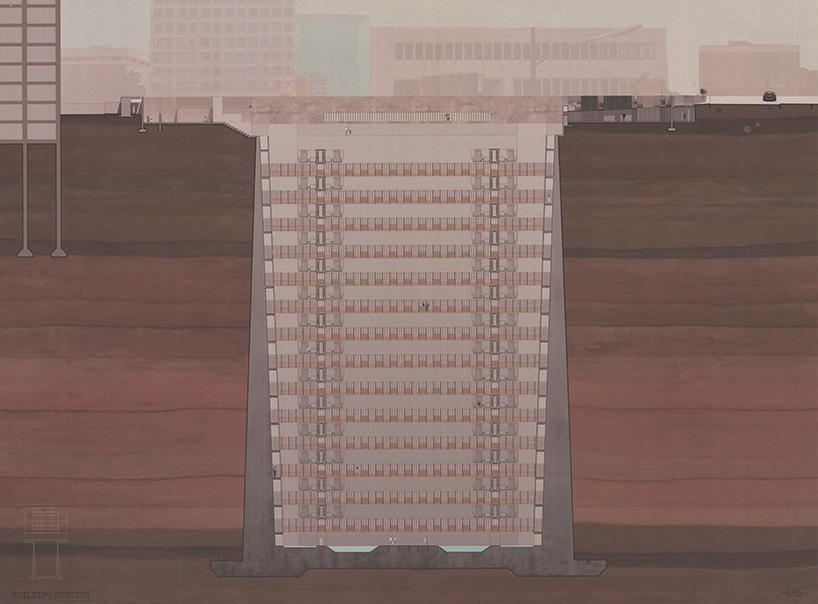
Section cut through cemetery to reveal depth–28 floors below ground level.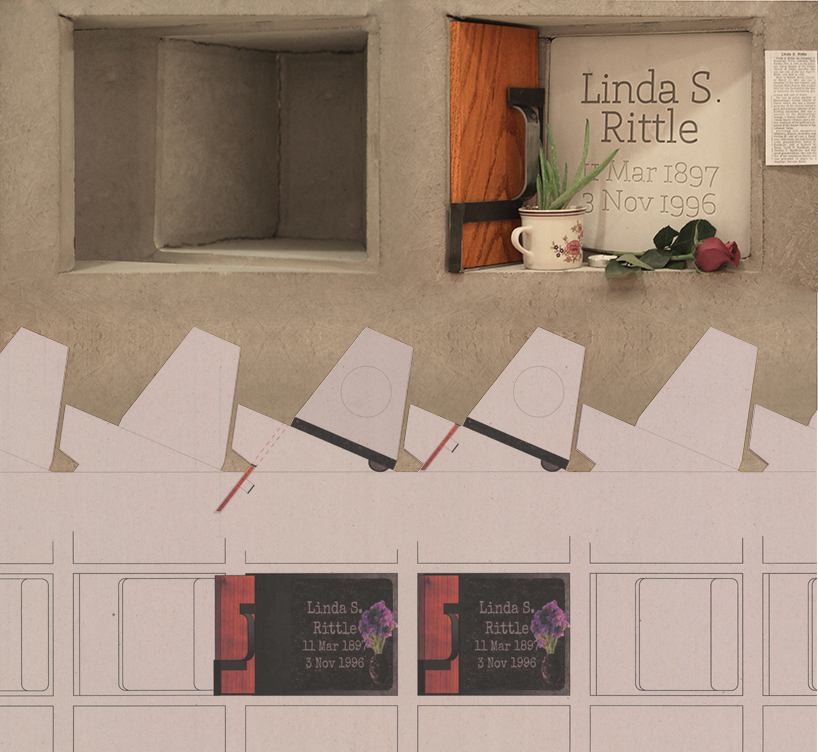
Vacant and occupied niches with plans and elevations.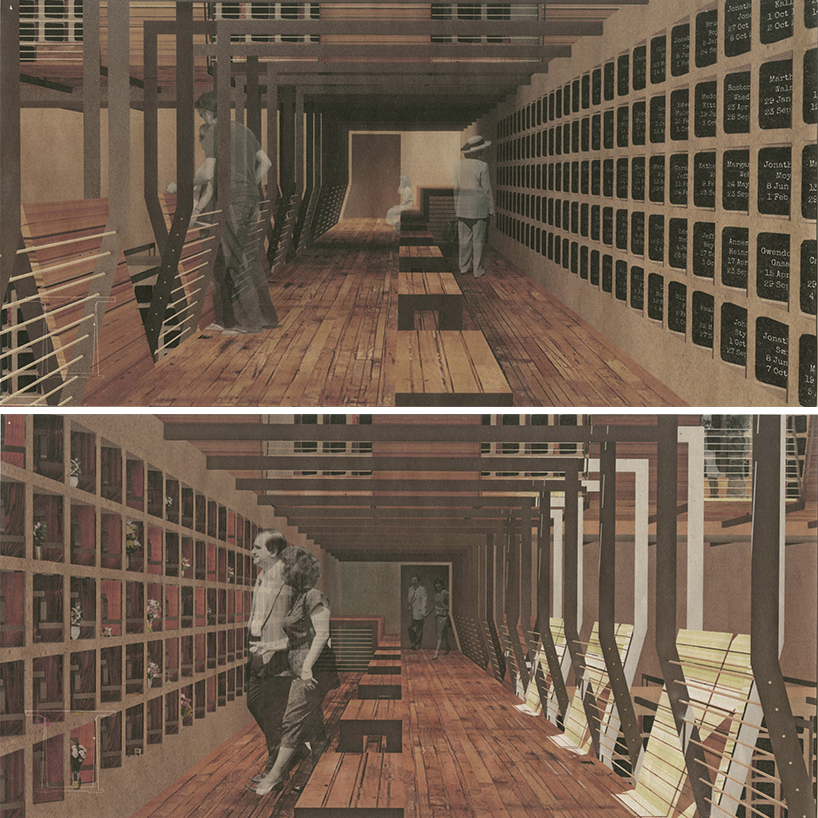
Columbaria are experienced differently depending on which direction you are walking. One direction reveals only the name plates of the dead while the other direction displayed a colorful array of wooden doors and trinkets.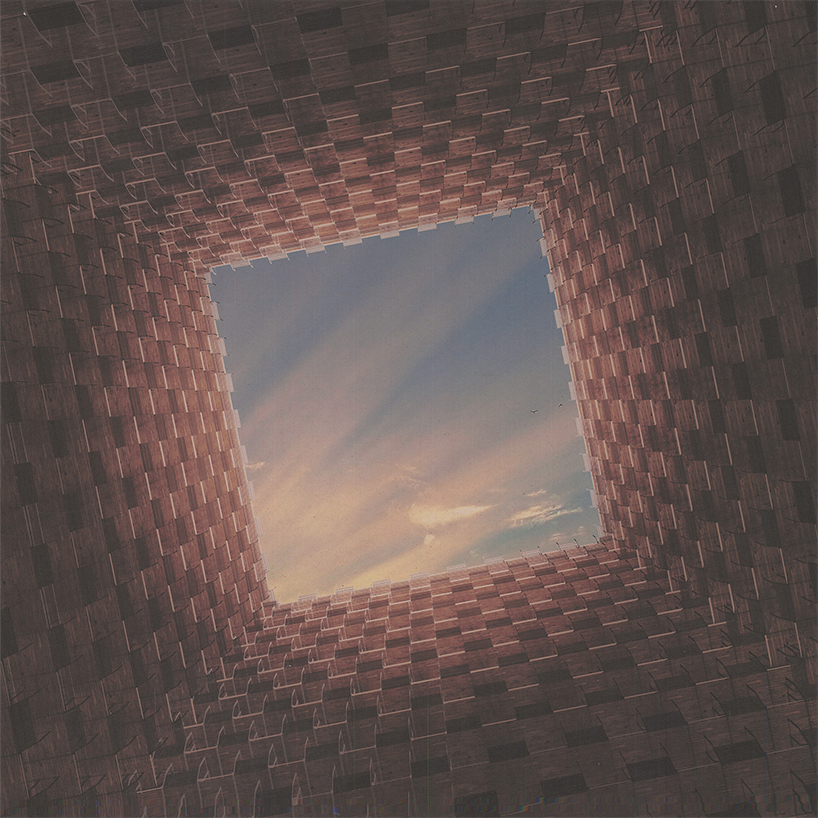
Perspective view from halfway down the cemetery, standing on a columbarium beam.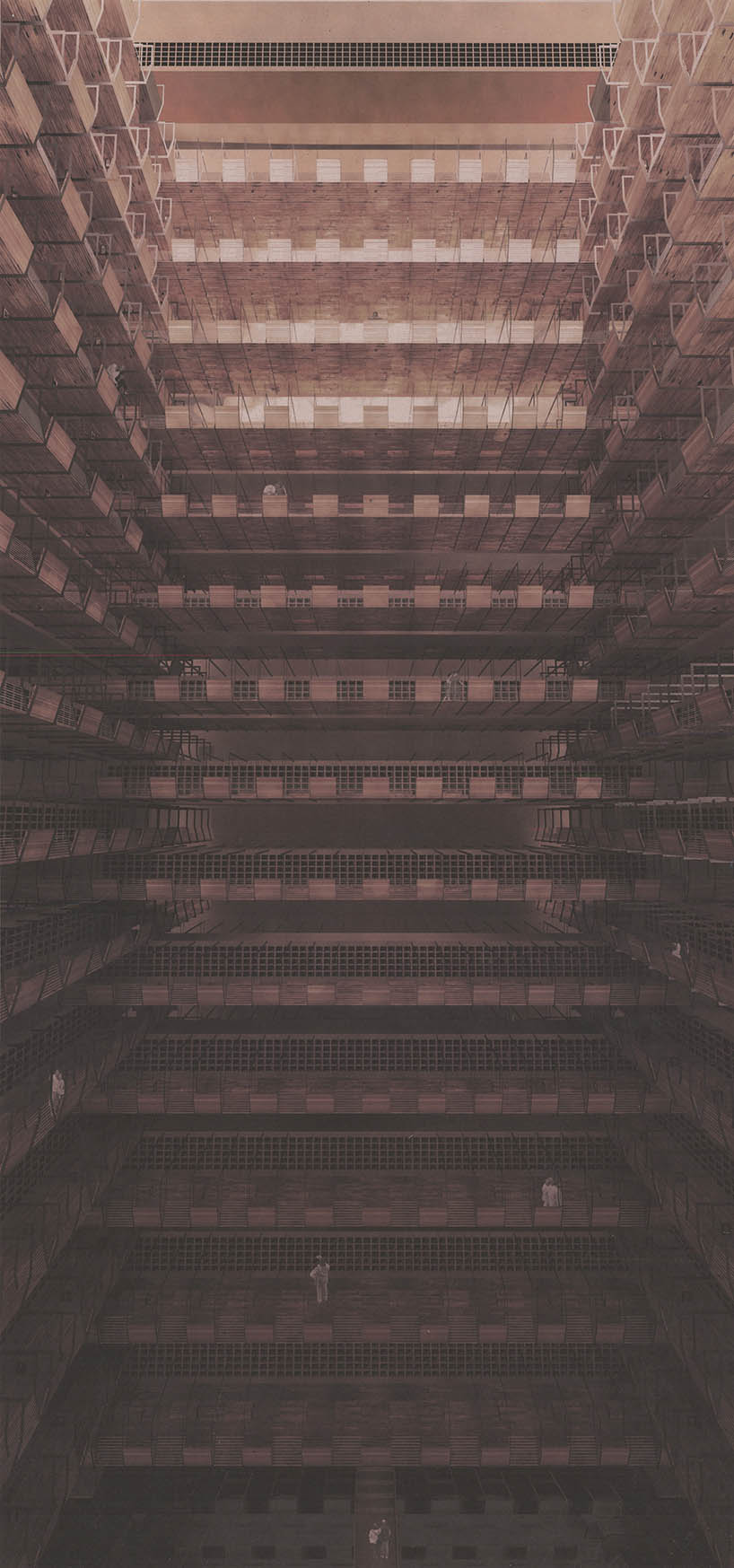
Perspective view from the bottom of the cemetery–a reward for braving the depths of death.